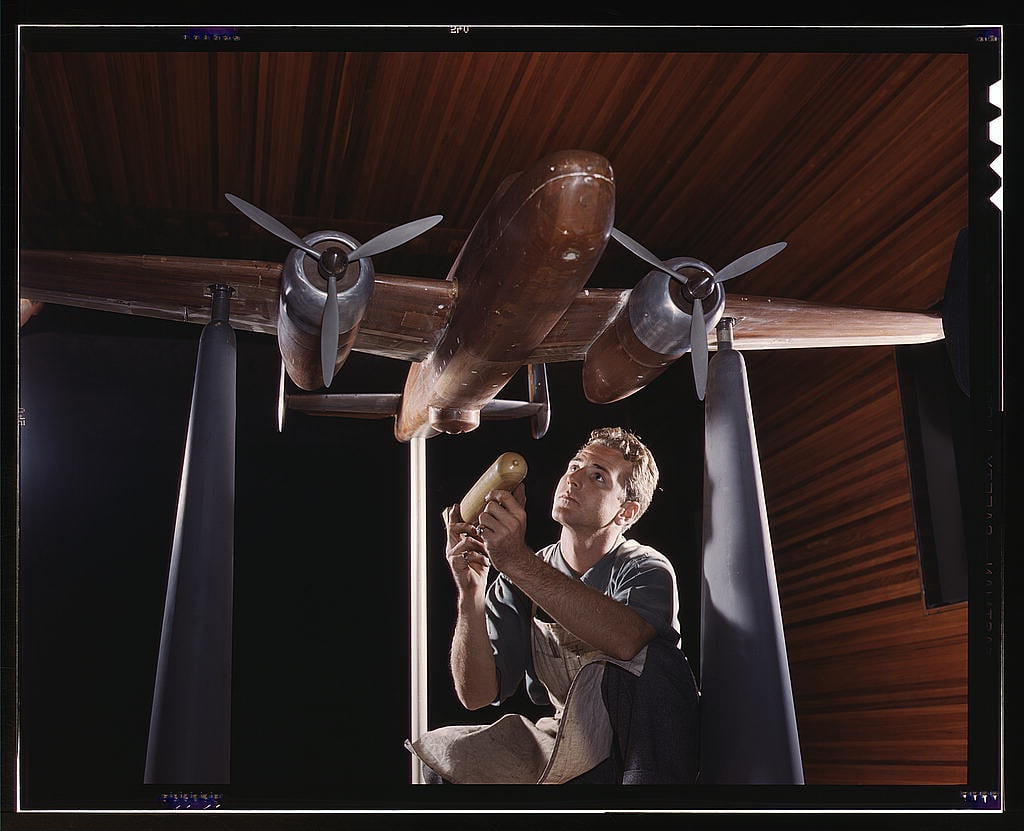PENSACOLA, Fla. — Flying Army bombers off a Navy aircraft carrier, U.S. forces struck a symbolic blow to the heart of the Japanese Empire nearly 75 years ago. The daring mission, known as the Doolittle Raid in honor of its commanding officer, took place about four months after the Japanese attack on Pearl Harbor, Hawaii, and boosted the morale of anxious Americans.
Pensacola's National Naval Aviation Museum is paying tribute to the men who planned and carried out the April, 18, 1942, raid by refurbishing a vintage B-25 B Mitchell bomber as a replica of the one flown by Lt. Col. James "Jimmy" Doolittle.
The bomber will go on display outside the museum's Blue Angels Atrium on April 18 to mark the 75th anniversary of the raid.
"Even though the raid itself didn't cause real considerable damage to the enemy, it did create a major morale boost in the U.S. It showed that we were striking back," said Hill Goodspeed, the museum's historian. "At that point in the war, it was a very dark time for the U.S. Japanese conquest was widespread, so it represented Americans strike back, and it was a bright spot for people on the home front."

An experimental scale model of the B-25 plane is prepared for wind tunnel tests in the plant of the North American Aviation, Inc., Inglewood, Calif., circa 1939. The model maker holds an exact miniature reproduction of the type of bomb the plane will carry. This plant produces the battle-tested B-25 bomber used in General Doolittle's raid on Tokyo, and the P-51 ("Mustang") fighter plane which was first brought into prominence by the British raid on Dieppe
Photo Credit: Library of Congress
The raid also marked the first time large Army bombers were flown from a Navy carrier. The 80 airmen who flew the 16 planes, loaded with one-ton bombs, had only enough fuel to drop the bombs on Tokyo and try to land in China with the hope that the Chinese would help them to safety. Three of the airmen were killed during the raid. Eight others were captured by the Japanese, and three of them were later executed.
Steve Granger, the museum's aircraft preservationist, has overseen more than 4,500 hours of work on the restoration project.
Granger said the project often causes him to think about what the young men who flew the Doolittle mission endured.
"The key issue for me is the mindset of the 80 airman, knowing the risk that they were taking. It was something much greater than themselves and they realized the impact that it would create," said Granger, who researched every detail of the aircraft — even tracking down the exact shade of drab olive green used on the planes back in 1942.

Left to right: Second Lt. Henry A. "Hank" Potter; Lt. Col. James "Jimmy" Harold Doolittle; Staff Sgt. Fred Anthony Braemer; 2nd Lt. Richard E. Cole; and Staff Sgt. Paul John Leonard stand in front of a B-25 Mitchell bomber.
Photo Credit: Courtesy photo from doolittleraider.com via DVIDS
The most-difficult issue in restoring the vintage B-25 was repairing the many decades of corrosion. The museum acquired the B-25 years ago and it had been stored outside, exposing it to the elements.
Granger said workers spent many hours cutting out and repairing corroded areas and treating other areas of the plane with a corrosion preventative.
Another challenge was ensuring the insignias and other markers exactly matched the ones on the original plane.
Throughout the process, Granger said he was amazed to think of the crew flying over the Pacific on the dangerous mission in the bulky and uncomfortable bomber.
"It's not like the planes the military flies today," he said. "These planes were built for one purpose, they were war horses. They were just mechanical machines, and the airmen of that time had to adapt to the machines rather than the machines adapting to them."
The Doolittle Raiders planned the raid at Eglin Air Force Base, and Navy Lt. Henry Miller, who was based at Pensacola Naval Air Station, was among the experienced carrier pilots who helped train the bomber pilots to fly off the carrier deck for the raid.
Even though the raiders were part of the Army, Goodspeed said the mission was significant in the history of carrier-based aviation, which the museum highlights.
The men were flying twin-engine bombers that were not designed to fly off an aircraft carrier.
"There were a lot of things that had to be taken into consideration" he said. "It was a mission that exemplified the flexibility of carrier aviation because, without the carrier, there was no way they could have blanched a raid of that nature."





